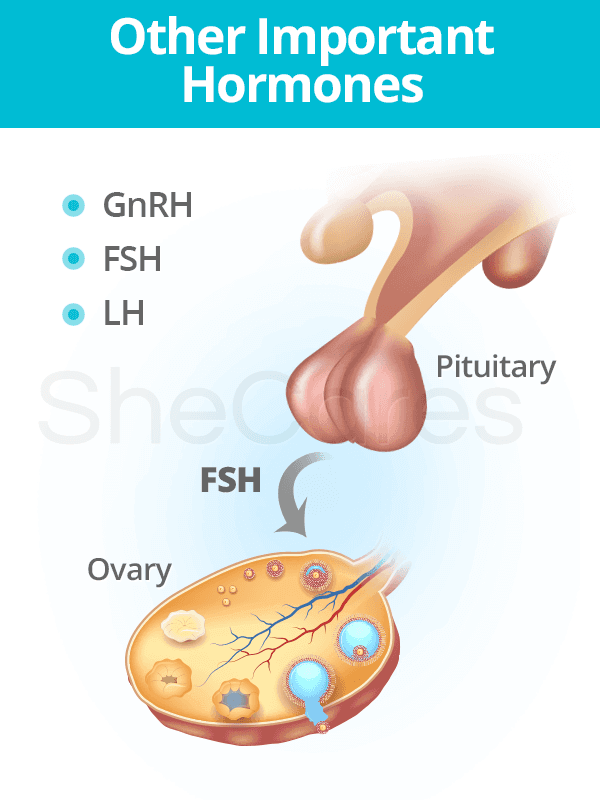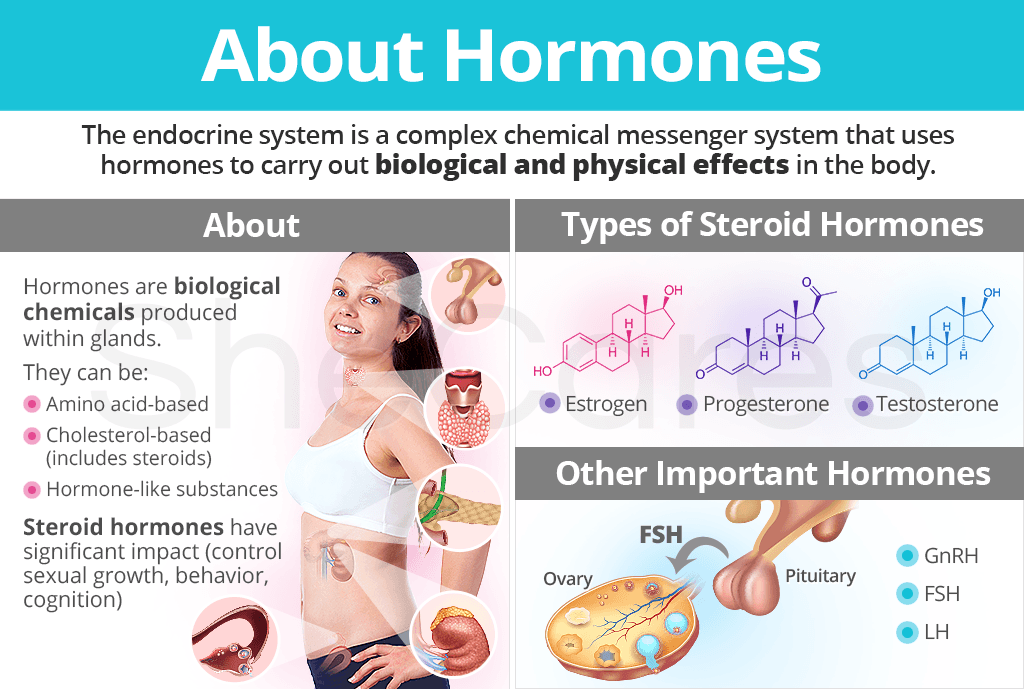The endocrine system is a multifaceted chemical messenger system that produces compounds needed to regulate essential bodily functions, like growth, metabolism, reproduction, and more. These compounds, known as hormones, are sent out to communicate with other systems in the body. Without them, women wouldn't be who or where they are today.
Continue reading to learn more about hormones in the human body, specifically about hormones in women, in addition to the various types needed to positively affect all aspects of life.
About Hormones in Women

Hormones are biological chemicals that are produced within the body's endocrine glands. The endocrine glands include those of the pituitary, pancreas, thyroid, and adrenal as well as the hypothalamus and ovaries, among others.
Once secreted, these hormones are transported throughout the bloodstream and act as chemical messengers between the various body parts, effectively controlling different processes for optimal health.
The two main groups of hormones are amino acid-based or cholesterol-based (including steroid hormones) in addition to other hormone-like substances.
Research has shown steroid hormones to have a significant impact on women's health, all the way from menarche to postmenopause, as they control sexual growth and reproduction, behavior, cognitive abilities, and more.1
Aside from the most common steroid hormones in women, there are other hormones that play an instrumental role in contributing to reproductive and overall health in the female body.
Principal Types of Female Steroid Hormones
The principal steroid hormones in women are estrogen, progesterone, and testosterone.
Estrogen

Estrogen is the ubiquitously famous female sex hormone that is essential to the development and maintenance of female characteristics and sexual functions. Estrogen production occurs principally in the ovaries and the adrenal glands as well as the placenta during pregnancy.
However, while the hormone does play an important role in the regulation of the menstrual cycle and maintenance of the female reproductive system, the effects of estrogen are also felt in the cardiovascular, musculoskeletal, and integumentary systems, among others.
Progesterone
Similar to estrogen, progesterone is also a female sex hormone that is vital for the health of the female reproductive system, largely preparing the uterus for a fertilized ovum to maintain pregnancy. It is produced in the ovaries, the adrenal glands, and the placenta.
Aside from its reproductive functions, an essential progesterone function is to balance out the effects of estrogen in a woman's body. For example, a condition known as estrogen dominance, caused by high estrogen levels in the wake of insufficient progesterone, can lead to symptoms such as hair loss, depression, migraines, water retention, and more.
Testosterone
Testosterone is commonly stereotyped as being a male hormone, yet it does also contribute to a healthy libido and toned muscle mass in women. Testosterone production in women occurs in the adrenal glands, ovaries, and extragonadal conversion sites, like the skin and fat tissues.
Apart from its role in sexual and muscular health, testosterone functions to stimulate the production of red blood cells, encourage healthy collagen, and promote bone growth as well.
Other Important Hormones in Women
Other hormones in the female body that serve essential functions include, but are not limited to, the following:
Gonadotropin-releasing hormone (GnRH)

This hormone is created and secreted by the hypothalamus. Its principal role in the female reproductive system is to stimulate the release of follicle-stimulating hormone (FSH) and luteinizing hormone (LH) from the pituitary gland.
Follicle-stimulating hormone (FSH)
FSH is released by the pituitary gland to encourage the growth of follicles in the first half of the menstrual cycle leading up to ovulation. As the follicles increase in size, they begin to produce estrogen and inhibit further secretion of FSH.
Luteinizing hormone (LH)
When the ovarian follicle is mature, there is a spike in LH levels to trigger ovulation, or egg release of the ovary. It is said that ovulation takes place up to 12 hours after LH reaches its max.2
Conclusions
The aforementioned list of hormones is not conclusive as over 200 hormones or hormone-like substances have been discovered.3 Each is as unique as the next, contributing to the intricate functioning of the female body on a daily basis. Continue reading to have an in-depth understanding of the roles and effects of hormones in the female body.
Sources
- Colorado State University. (2019). Hormone Chemistry, Synthesis and Elimination. Retrieved October 21, 2019, from http://www.vivo.colostate.edu/hbooks/pathphys/endocrine/basics/chem.html
- Holesh, J.E. & Lord, M. (2019). Physiology, Ovulation. Retrieved October 28, 2019, from https://www.ncbi.nlm.nih.gov/books/NBK441996/
- Hormone Health Network. (n.d.). The Endocrine System | Women's Health | Your Health and Hormones. Retrieved October 21, 2019, from https://www.hormone.org/what-is-endocrinology/the-endocrine-system | https://www.hormone.org/your-health-and-hormones/womens-health | https://www.hormone.org/your-health-and-hormones
- Michigan Medicine. (2018). Thyroid Hormone Production and Function. Retrieved October 30, 2019, from https://www.uofmhealth.org/health-library/ug1836
- The North American Menopause Society. (n.d.). Changes in Hormone Levels. Retrieved October 21, 2019, from https://www.menopause.org/for-women/sexual-health-menopause-online/changes-at-midlife/changes-in-hormone-levels
- Society for Endocrinology. (2018). Follicle stimulating hormone. Retrieved October 28, 2019, from https://www.yourhormones.info/hormones/follicle-stimulating-hormone/
Footnotes:
- Pablo Del Río, J. et al. (2018). Steroid Hormones and Their Action in Women's Brains: The Importance of Hormonal Balance. Frontiers in Public Health, 6, 141. doi: 10.3389/fpubh.2018.00141
- UCSF Health. (n.d.). The Menstrual Cycle. Retrieved October 28, 2019, from https://www.ucsfhealth.org/education/the_menstrual_cycle/
- The Pituitary Foundation. (n.d.). Your hormones. Retrieved October 28, 2019, from https://www.pituitary.org.uk/information/hormones/


